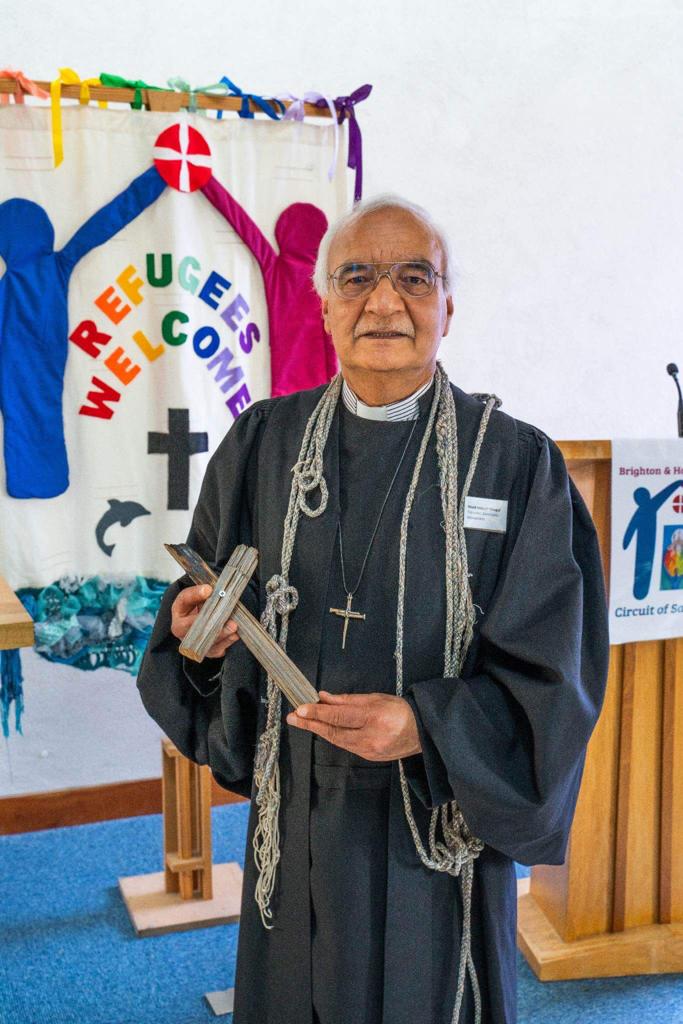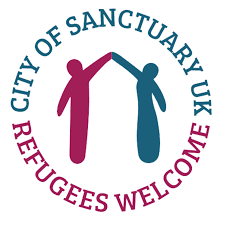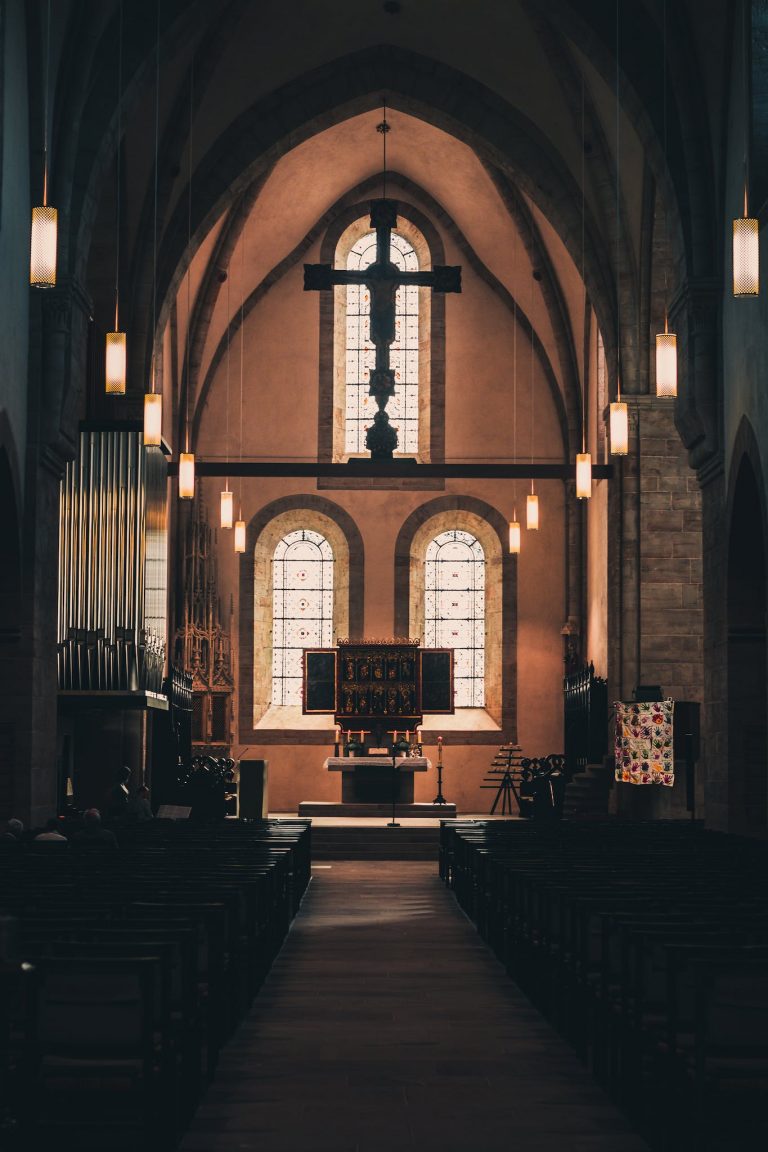On 18th June 2007, during Refugee Week, the Lord Mayor of Sheffield pronounced from the steps of the City Town Hall that Sheffield City Council had declared support for Sheffield as a City of Sanctuary.
On 18th September, Sheffield’s City of Sanctuary Committee organised a Press Conference in Sheffield Town Hall to spread the news.
There were a number of reports in the local press. We engaged ion a Radio 5 Live interview and Phone in, and Radio 4 gave an extended report on their Sunday programme.
On 17th October Sheffield City of Sanctuary had only it’s second AGM. We recorded that Sheffield is UK’s first City of Sanctuary.
When I first shared the idea of Sheffield as a City of Sanctuary at a meeting on 15th October 2005, I expected us to work for three or four years to realise our objective.
I want to tell the story of our achievement, and I want to invite the Refuge Council to consider as part of your future strategy to encourage other Cities in England, Wales, Scotland and Ireland to become Cities of Sanctuary.
The objective of City of Sanctuary movement in Sheffield is to create a culture of welcome and hospitality for Asylum Seekers, Refugees and other vulnerable migrants among us.
This work is urgent and important in our times of open hostility and hatred towards people who come here seeking protection and security – fleeing the torture of persecution or poverty.
I came to UK with my family as a refugee in 1964.
Over the last 40 years I have observed, and often challenged, developments in our Immigration and Asylum laws and procedures which in many ways have been monstrous.
About 25 years ago, I became part of a movement of churchy and not so churchy people to challenge these laws and procedures by protesting against unjust deportations. Sometimes this protest involved people taking sanctuary in Churches or Mosques…..not to avoid or evade law but to challenge injustice publicly, and to seek a response from Government.
I have continued to seek a fair deal for Asylum Seekers particularly. Ten years ago I walked all the way from the steps of Sheffield Town Hall to 10 Downing Street with a letter to the Prime Minister asking that Asylum Seekers should not be detained in conventional prisons as they are not criminals.
The roots of Sanctuary are thousands of years old, and have their basis in such diverse cultures as ancient Egyptian, Hebrew and Greek. The Hebrew tradition enshrined the experience of a formerly oppressed people into the legal code of their new society when six Cities of refuge/Sanctuary were established according to the legislation set out in the Book of Numbers 35:6-34. These Cities were able to give refuge to anyone, including a foreigner who was accused of manslaughter, thus preventing the automatic use of blood feud as a rough, ready and often indiscriminately unfair route to justice.
The Hebrew tradition provided the basis for the incorporation of Sanctuary into the life of Western European society through its adoption by the Christian Church; and with the transition of the Church from a persecuted sect into an officially recognised and promoted religion, Sanctuary became legally recognised, although always subject to certain restrictions, and often caught in the tension between the competing claims of Church and State over the boundaries of their spheres of authority.
The earliest mention of Sanctuary in England was in the code of laws issued by King Aethelbert in the years 600AD. Under Norman rule, there were 2 kinds of Sanctuary:
– a general right to Sanctuary which belonged to every church
– a particular right to Sanctuary which was granted to some cities by Royal Charter.
The number of Sanctuaries were reduced in the reign of Henry VIII, and in 1623, the general right to Sanctuary was abolished by statute law, although the basis of Sanctuary has always been moral.
Christian Sanctuaries, in early Church history, were for fugitive slaves. In Britain, the first Christian martyr, St Alban, was canonised because he was martyred for giving Sanctuary to a fleeing person.
The concept of Sanctuary re-emerged in the 20th Century, first in El Salvador, as a form of protection from the activities of ‘death squads’. From there it was taken up in the USA when churches sheltered Guatemalans and Salvadorians refused asylum.
In 1982, a Presbyterian Church in Arizona, unwilling to see people sent back to certain detention, became the first Church to offer Sanctuary. Scores more followed, and were joined by synagogues.
There have been sanctuaries for migrants in Germany, Switzerland, Denmark and Sweden as well as in the UK. The best known Sanctuary in UK was that taken by Viraj Mendis in the Parish Church of the Ascension, Hulme, Manchester 20 years ago [20 December 1986 to 18 January 1989].
I chaired the “Sanctuary Working Group” of the Council of Churches in Britain and Ireland’s Community and Race Relations Unit late 80’s early 90’s. The Methodist Conference meeting in Leicester in June 1989 adopted a set of Guidelines on Sanctuary.
The law should safeguard human rights and also offer some flexibility. If it does not do so, people will do whatever they can to protect themselves. Many have taken Sanctuary in religious buildings.
Three years ago I began to wonder, could Sheffield become a recognised ‘City of Sanctuary’ for Asylum seekers and refugees?
Many people are now familiar with the idea of a ‘Fairtrade City’, in which a wide range of community groups and organisations make a commitment to using and selling fair-trade goods. In a similar way, a ‘City of Sanctuary’, we imagined, would be a place where significant numbers of schools, community groups, faith groups and cultural organisations, as well as local government, were committed to offering hospitality and support to refugees and asylum-seekers in their communities.
Many people who support refugees and asylum-seekers experience the difficulty of constantly reacting to ever-harsher legislation and media coverage. It can be difficult to feel a sense of achievement or progress towards a more hospitable and humane society. Working towards ‘City of Sanctuary’ status for Sheffield we felt would represent a positive common goal and aspiration for a wide variety of organisations, groups and individuals. Just as with a ‘Fairtrade City’, it could embody a set of explicit goals for the number of local organisations that signed up to the initiative, and a commitment to broaden support for the idea in order to gradually influence the culture of the city as a whole.
Sheffield has an excellent record of support for asylum-seekers and refugees, and a diverse and thriving multicultural population. This made it ideally placed to be the first city to adopt the goal of becoming a ‘City of Sanctuary’ for people in need of safety from persecution.
Other cities in the region and beyond may follow the direction with Sheffield leading the way.
Following a meeting on 15th October 2005, to discuss Sanctuary, many organisations adopted the following resolution:
“Our organisation recognises the contribution of asylum seekers and refugees to the City of Sheffield, and is committed to offering hospitality to people who come here in need of safety from persecution. We support the goal of Sheffield becoming a recognised City of Sanctuary for asylum seekers and refugees,”
We called for support from Sheffield’s Faith Leaders from all Faiths, Political Leaders, Community Organisations, Educational Institutions and all people committed to offering hospitality and support to asylum seekers and refugees in our City.
Almost 100 organisations have signed up so far, including community organisations, worship centres, Students Unions of both our Universities, a number of Businesses, our Faith Leaders from different Faiths, and, our City Council that represents different political persuasions.
On 18th June 2007 Sheffield became UK’s first City of Sanctuary.
The City of Sanctuary Committee, just 8 of us, is now beginning to consult with all who support us to develop goals for a City of Sanctuary. In consultations with supporters we’ve written a vision that states what a City of Sanctuary looks like, and also criteria for a City of Sanctuary.
On 4th June 2008, over 100 people from 23 different Cities/Towns/Villages [England, Wales and Scotland] met to hear the story of developments in Sheffield. They went back to their own contexts to explore how their own area could follow Sheffield’s lead.
There are now City of Sanctuary working groups in Bradford, Belfast, Birmingham, Bristol, Coventry, Leicester, Oxford and London. The London group is to be launched on 12th November 2008 at St Martins in the Field.
The Refugee Council is supporting the City of Sanctuary movement nationally.
There is opportunity to work with local people to counter some of the hostile attitudes that drive government policy and to create a culture of hospitality and welcome.
The significant fact about the City of Sanctuary is that it is a grassroots movement. The lesson from Sheffield is to involve people and organisations from all backgrounds, to create a groundswell of support and an unstoppable momentum.
Go for it!
Rev Dr Inderjit Bhogal



